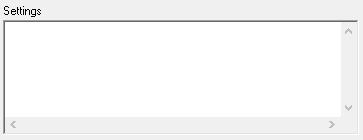Settings variables (also called parameters) are used to turn settings on and off and are used to control the behavior of whatever you're interacting with.

For example, not every API uses the same language or data structure. So, when you're configuring
As an example, Airlink and Multitech both produce lines of cellular devices that can be accessed via COM or TCP but each implements a different AT command set. PageGate can automatically negotiate most connections with most devices and does automatically retain which command is best to use but you can decrease the overall amount of time it takes to deliver a message by specifying the necessary value in the Settings template.
Template values are ranked in this order:
1)Recipient
2)Carrier
3)Connector
4)Interface
5)Global
So, a Settings variable specified on a Carrier level will override any Global value. To use our earlier example, let's say you have an environment in which you're using multiple cellular modems; some of them Airlink, some of them Multitech. Since you have two devices that need to use the same protocol (GSM-AT-IP) but also need it implemented in different ways, you would specify a carrier level template value that configures the Airlink device for one AT command set and the Multitech device for the other. Alternately, you could tie each cellular gateway to a specific Connector, then specify a Connector level template instead.
Variables that can be specified in the Settings section of a template can be broken down in to a few categories: Protocol Delivery and Content Modification
Protocol Delivery
These variables modify the behavior of a protocol and specify certain declarations that must be made during the protocol negotiation sequence.